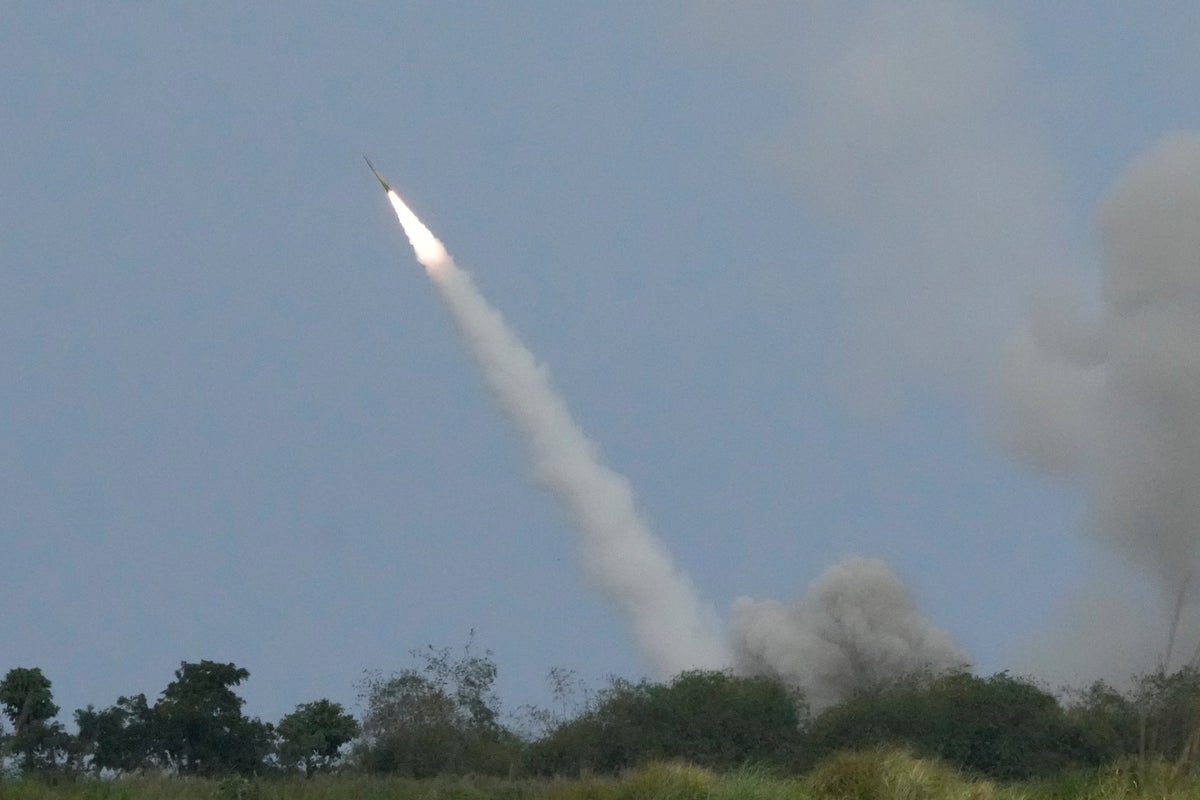
Thousands of American and Filipino forces pummeled a ship with a barrage of high-precision rockets, airstrikes and artillery fire in their largest war drills on Wednesday in Philippine waters facing the disputed South China Sea that would likely antagonize China.
President Ferdinand Marcos Jr. watched the American show of firepower from an observation tower in the coastal town of San Antonio in northwestern Zambales province — the latest indication of his strong backing of the Philippines' treaty alliance with the U.S.
Marcos has ordered his military to shift its focus to external defense from decades-long anti-insurgency battles as China’s increasingly aggressive actions in the South China Sea become a top concern. The shift in the Philippine defense focus falls in sync with the Biden administration’s aim of reinforcing an arc of alliances in the Indo-Pacific region to better counter China.
China has angered the Philippines by repeatedly harassing its navy and coast guard patrols and chasing away fishermen in the waters close to Philippine shores but which Beijing claims as its own. The Philippines has filed more than 200 diplomatic protests against China since last year, including at least 77 since Marcos took office in June.
Sitting beside U.S. Ambassador MaryKay Carlson and his top defense and security advisers, Marcos used a pair of binoculars, smiling and nodding, as rockets streaked into the blue sky from the U.S. High Mobility Artillery Rocket System, or HIMARS, a multiple rocket and missile launcher mounted on a truck that has become a crucial weapon for Ukrainian troops battling Russian invasion forces.
The coastal clearing in front of Marcos resembled a smoke-shrouded war zone, which thudded with artillery fire as AH-64 Apache attack helicopters flew overhead.
“This training increased the exercise’s realism and complexity, a key priority shared between the Armed Forces of the Philippines and the U.S. military,” Lt. Gen. William Jurney, commander of U.S. Marine Corps Forces, Pacific, said.
“Together we are strengthening our capabilities in full-spectrum military operations across all domains,” said Jurney, the U.S. director for the annual joint exercises called Balikatan, Tagalog for ”shoulder-to-shoulder."
About 12,200 U.S military personnel, 5,400 Filipino forces and 111 Australian counterparts were taking part in the exercises, the largest since Balikatan started three decades ago. The drills have showcased U.S. warships, fighter jets as well as Patriot missiles, HIMARS and anti-tank Javelins, according to U.S. and Philippine military officials.
The ship targeted by the allied forces was a decommissioned Philippine navy warship, which was towed about 18 to 22 kilometers (11 to 14 miles) out to sea.
Smaller floating targets, including empty drums tied together, were also used as targets to simulate a battle scene where a U.S. Marine Corps command and control hub enabled scattered allied forces to identify and locate enemy targets then deliver precision rocket and missile fire.
Philippine military officials said the maneuvers would bolster the country’s coastal defense and disaster-response capabilities and were not aimed at any country. China has opposed military drills involving U.S. forces in the region in the past as well as increasing U.S. military deployments, which it warned would rachet up tensions and hamper regional stability and peace.
Washington and Beijing have been on a collision course over China’s increasingly assertive actions to defend its vast territorial claims in the South China Sea and Beijing’s goal of annexing Taiwan, by force if necessary.
In February, Marcos approved a wider U.S. military presence in the Philippines by allowing rotating batches of American forces to stay in four more Philippine military camps. That was a sharp turnaround from his predecessor Rodrigo Duterte, who feared that a larger American military footprint could antagonize Beijing.
China strongly opposed the move, which would allow U.S. forces to establish staging grounds and surveillance posts in the northern Philippines across the sea from Taiwan and in western Philippine provinces facing the South China Sea, which Beijing claims virtually in its entirety.
China has warned that a deepening security alliance between Washington and Manila and their ongoing military drills should not harm its security and territorial interests or interfere in the territorial disputes.
The Chinese Foreign Ministry has said that such military cooperation “should not target any third party and should be conducive to regional peace and stability.”







